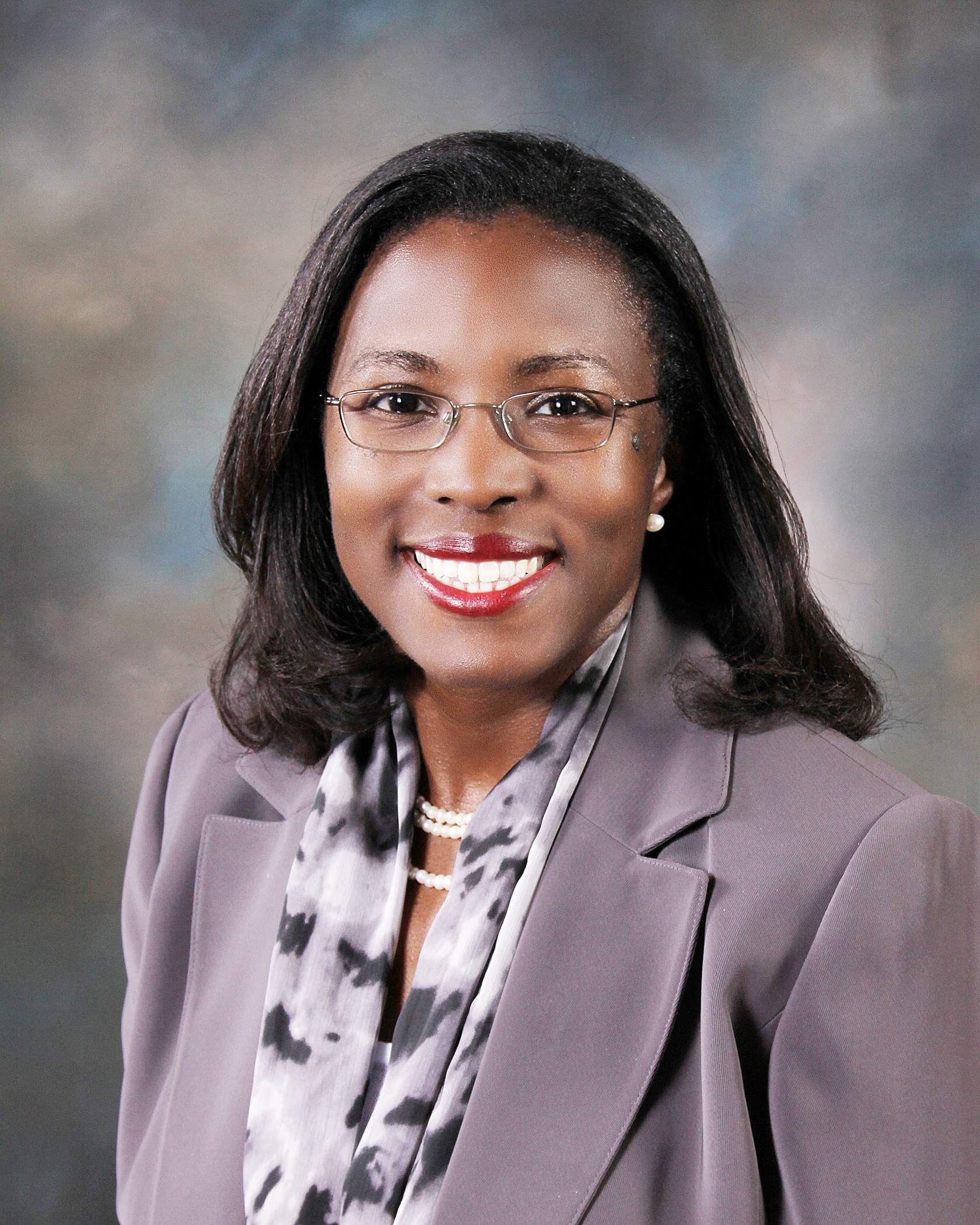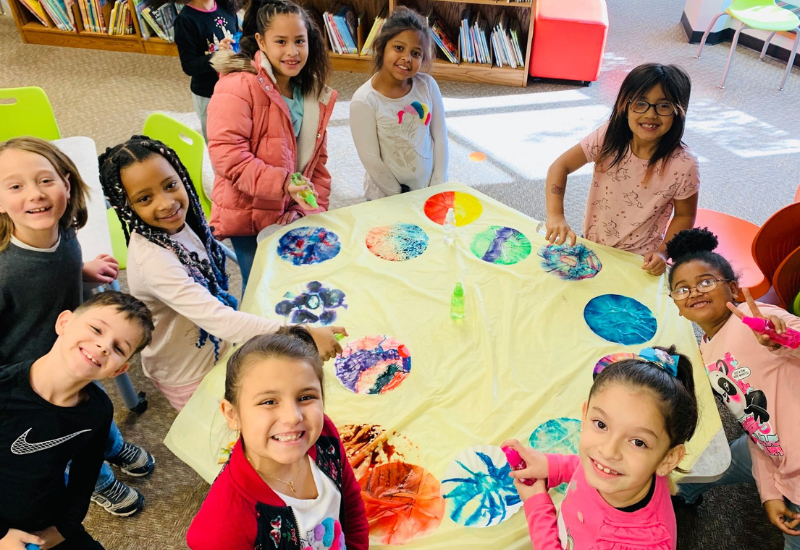In 1950, the NAACP asked third-grader Linda Brown’s father to be one of a handful of plaintiffs in what would become Brown vs. Board of Education of Topeka, Kansas.

In 1954, the US Supreme Court ruled in the plaintiffs’ favor, ending the legalized segregation of Black and white children in public schools.
In 2016, Brown met Tiffany Anderson, the first Black female superintendent for Topeka Public Schools, home of the once-all-Black school Brown first attended — and the same Kansas district that Brown’s grandchildren now attend.
Anderson — who several years before had had the N-word scrawled on her car while visiting a school as superintendent in another state — was awestruck. Brown told her that “she’s waited over 50 years” for Anderson and that Brown’s “family of color is expecting great things.”
Nothing like a little pressure
Anderson definitely feels the weight of Brown’s statement. Creating access and opportunities for young people is “a responsibility that I carry with a great sense of urgency,” she says. “It’s not just attending school with people that don’t look like you or have diverse backgrounds. It is also truly having the opportunities, the equal opportunities, to advanced classes and honors classes to graduate and really having doors open that would not otherwise be open.”
Friday is the 70th anniversary of the Brown v. Board of Education ruling, giving Anderson plenty of reason to look to the past, present and future. She will be featured on “CBS Evening News” Thursday and has a book, “Building Parent Capacity in High-Poverty Schools,” coming out later this month. Anderson’s book features the “expecting great things” quote from Brown, and her phone still carries the photo she got that day with Brown and Brown’s mother.
“It encourages me to continue to remove barriers and to create opportunities where there perhaps weren’t any before,” Anderson says, explaining why the picture is always at hand.
And, boy, is she doing that, like a superhero on a Linda Brown mission, disarming people with smiles, hugs and blazers. (She keeps jackets and scarves in several solid colors in the back of her truck, and, when traveling to different schools, she puts on the ones that match the school’s colors. “It’s school spirit day every day, everywhere,” she says with a grin.)
A litany of successes
In less than 10 years in Topeka, Anderson has accomplished a lot by coaxing others to embrace her vision. “It’s less about ‘me’ and more about ‘we’ in Topeka,” she has said.
“We have found there are three things that most people look for in a school, and even in a work environment. It’s that culture of caring: Do I belong? Do I see that I could have a future here? And am I safe?” Anderson says.
Everything starts with that.
Diversity and school choice

More than 36% of Topeka Public Schools students are non-white. Between 2010 and 2020, the district’s Hispanic population increased from 21% to 33%, and the multiracial population increased from 8% to 12%. Anderson aims for the most diversity possible in every school. Students can go to any public or charter school in the district; buses go to almost all of them.
The district recently received an influx of Ukrainian refugees, and that language is now the third most commonly spoken among students. Anderson tracked down a retired teacher who was part of an exchange program with Ukraine years ago and convinced him to come help welcome the refugees.
Graduation rates
Instead of teaching to the bottom, Anderson says the district raises everyone to the top by tailoring services to students’ needs — including the benefits listed below, which make for healthier, more stable families with more engaged students.
The district exceeds national figures in nearly every metric. In 2016, the year Anderson arrived in Topeka, the four-year graduation rates at the district’s five high schools ranged from 45% to 87.7%. In 2023, they’d jumped to a minimum 90.4% and maximum 93%. The four-year graduation rate for subgroups increased from 78.8% to 86.9% for students eligible for free or reduced lunch, from 78.1% to 82.2% for special education students and from 80.4% to 91.8% for English language learners.
Pre-kindergarten
All elementary schools have pre-kindergarten for eligible students. The district has several early childhood centers, many staffed by parents, which can be the beginning of the district’s sense of belonging. “That’s where you create the change to get parents involved,” Anderson says.
Dual language education
Topeka Public Schools has Kansas’ only pre-K-12 dual language school. All district administrators are asked to learn Spanish to improve bilingual relationships.
Interventionists
Each school has an instructional coach, interventionists and a regular substitute.
Career/college readiness
Students who want to work in any position the school district offers — from teacher to janitor — can enter an innovation center training program during high school and automatically get a contract to work for the school system upon graduating (or completing a college degree if necessary). “Twenty percent of our staff are parents and alums,” Anderson says, again pointing to continued relationships and belonging. “Every student (in the program) has come back. While we have a teacher shortage like everyone else, it’s less than what it was in 2016 and less than what it otherwise would be now.”
College and Career Advocates focus on students from low-income households but will help anyone who needs assistance with any aspect of job placement and college enrollment. These staff members keep in touch with students after graduation to help them work toward success.
A university partnership allows accelerated students to take college classes full time, for free, starting in their junior year of high school. That’s especially helpful for low-income students, as they can graduate from high school with 30 to 60 college credits. The university and school district work to keep curricula aligned.
Mental health
A mental health team and multiple counselors are in place at each school. A district mental health committee organizes training, wellness rooms, early detection screenings and more. “We’ve had no student suicides for six consecutive years,” Anderson notes.
Wraparound services
“We’ve created systems of love and belonging and inclusivity” to help families in need, Anderson says. Topeka Public Schools looks at the whole child and whole family, whether addressing chronic absenteeism with home outreach that includes potential solutions or providing a welcome center to help immigrant and refugee families, The welcome center is staffed to help with translation, school registration, language assessments and classes, and even clothing and supplies.
”When they have their work permit, we give them jobs, we give them volunteerism, we help them find housing. We give them groceries. We take them to a store that we have here in our own district, so they can shop with dignity and at no cost,” Anderson says.
That assistance, with the help of the United Way and local businesses, can include housing those without homes. Student homelessness in the district has decreased by 50%.
Community partnerships that pay for programs
Impact Avenues. United Way. City of Topeka. National Education Equity Lab. All these and many more organizations and businesses have come on board in some way to help realize Anderson’s vision.
“Hospitals and universities give teachers to us,” Anderson says. “It’s been remarkable just to see what’s possible. You know, I’ve learned your mindset is your only barrier — how you think about people and opportunities and how you think about your connection to those people.”
Using the right language to connect with others
Anderson has wielded savvy thinking to weather the storms, from the George Floyd to Gaza protests, from book bans to social and emotional learning backlash.
“We’re all wired to want to feel like we belong and to connect to others. What gets in the way sometimes is lack of knowledge and fear,” Anderson says. “Sometimes when you label things with a word or with language that causes people fear, that causes them to shut down.
“So, rather than labeling something with perhaps branded language that might have a negative connotation, we just invite people to learn about literature and to see literature that represents the communities that we serve, and [literature] that communities, that young people, are going to see globally,” Anderson says. “That’s just different language. In no way did I mention CRT (critical race theory) or any of those other pieces.”
Similarly, she’s in a group of (all white) superintendents in the area called Legislative One Voice, and she suggested they note on their platform that they don’t support CRT, then share that with the Kansas Legislature. “Now, are we teaching about other cultures? Yes. Are we teaching history? Did we expand our curriculum? Absolutely,” she says with a smile.
Anderson still uses the word equity. But because she knows others might believe equity means “dumbing down the curriculum or giving all people of color something that you aren’t giving other people,” she explains to them exactly what equity looks like for the district.
“If we can remove the fear by providing knowledge and building capacity, you can go farther than you ever thought and remove barriers in ways you never thought you could,” Anderson says.
“You know, I thank God for the plaintiffs that had the courage as parents to say, ‘My child should have the right to have choice and access the opportunities in typical public schools,’” she says. “Because of them and their courage, and how they thought, it changed the nation. I just get the privilege to be here, standing on the shoulders of these people, and then having the responsibility to carry it forward.”
* Linda Brown is sometimes confused with Ruby Bridges. Despite the 1954 landmark Supreme Court ruling ending segregation in schools, Southern states ignored it. In 1960, Louisiana ordered schools to desegregate, though many Black parents were too afraid of reprisals to send their children to white schools. Bridges and her parents braved the threats, making her the first Black student to actually attend a white school in the South.
Opinions expressed by SmartBrief contributors are their own.
_________________________
Subscribe to SmartBrief’s FREE email ASCD newsletter to see the latest hot topics in education. It’s among SmartBrief’s more than 250 industry-focused newsletters.
